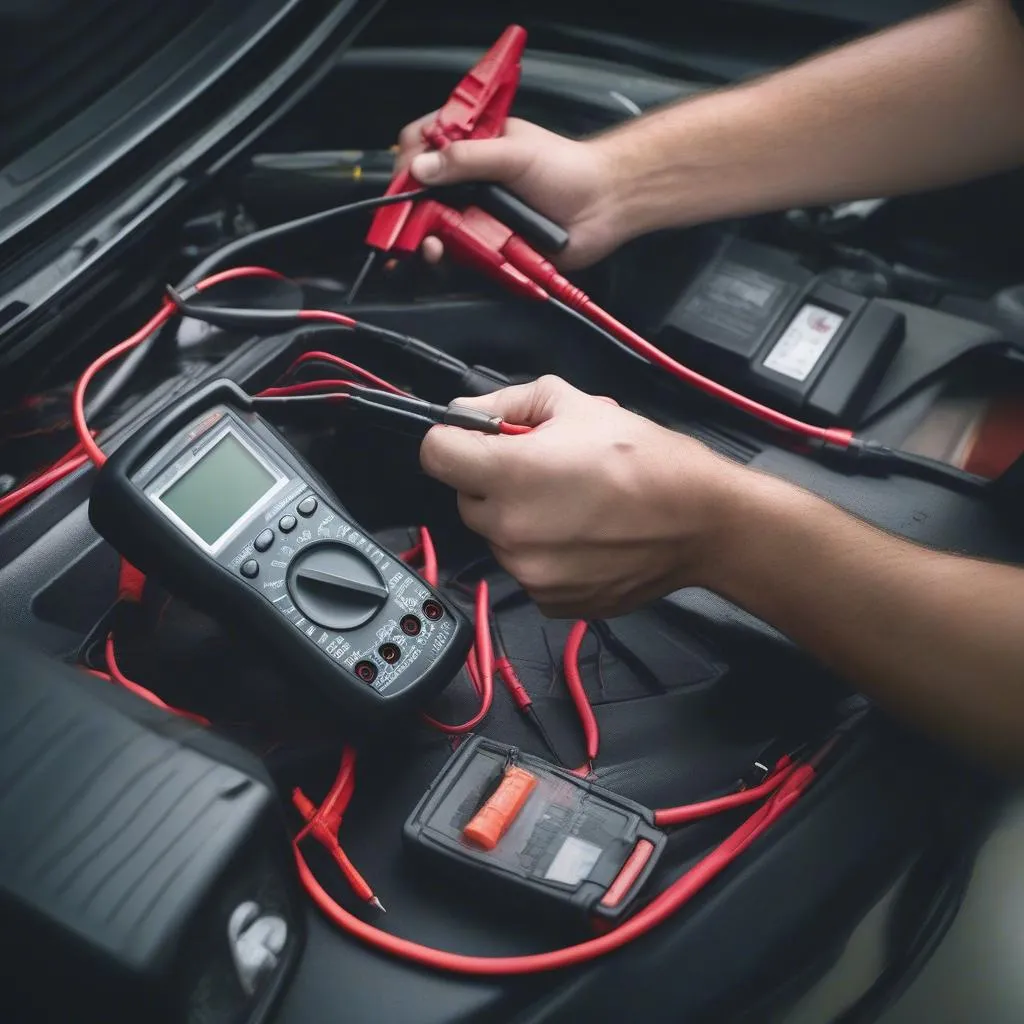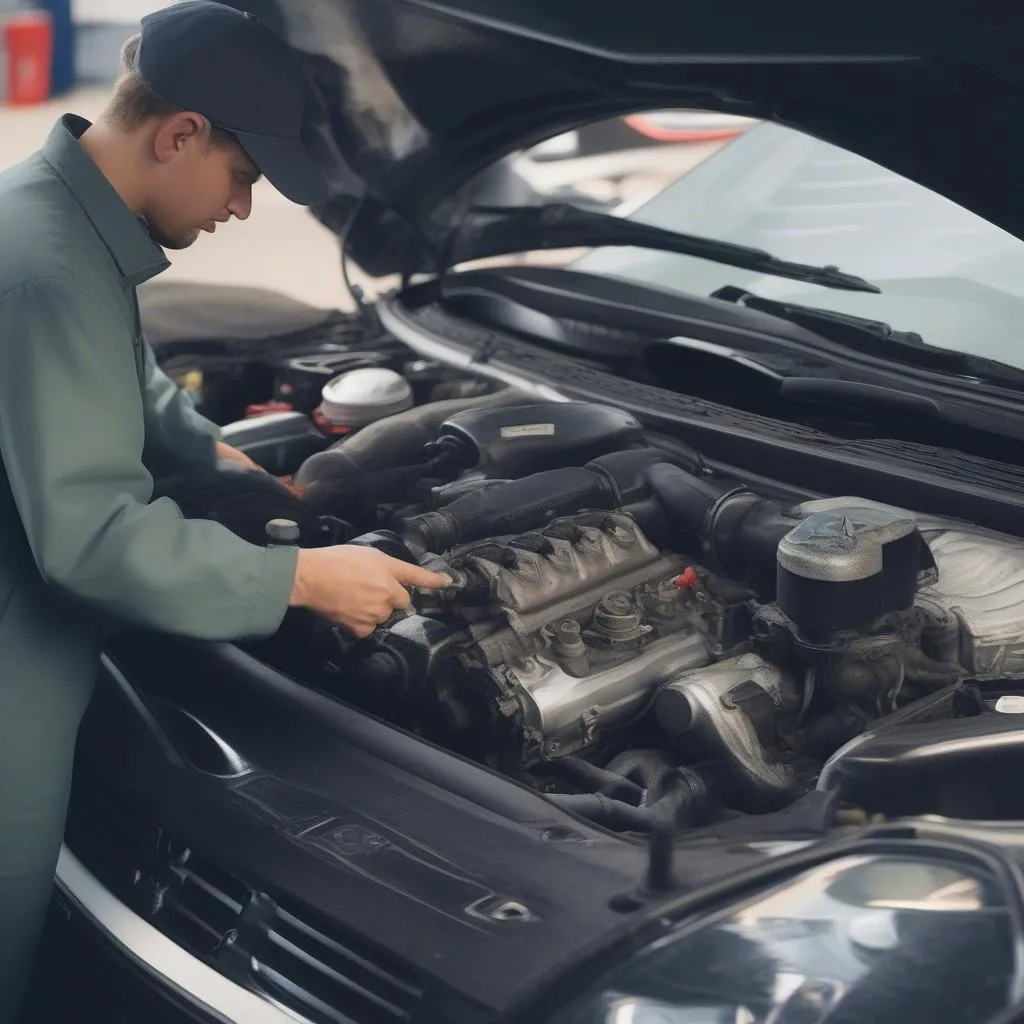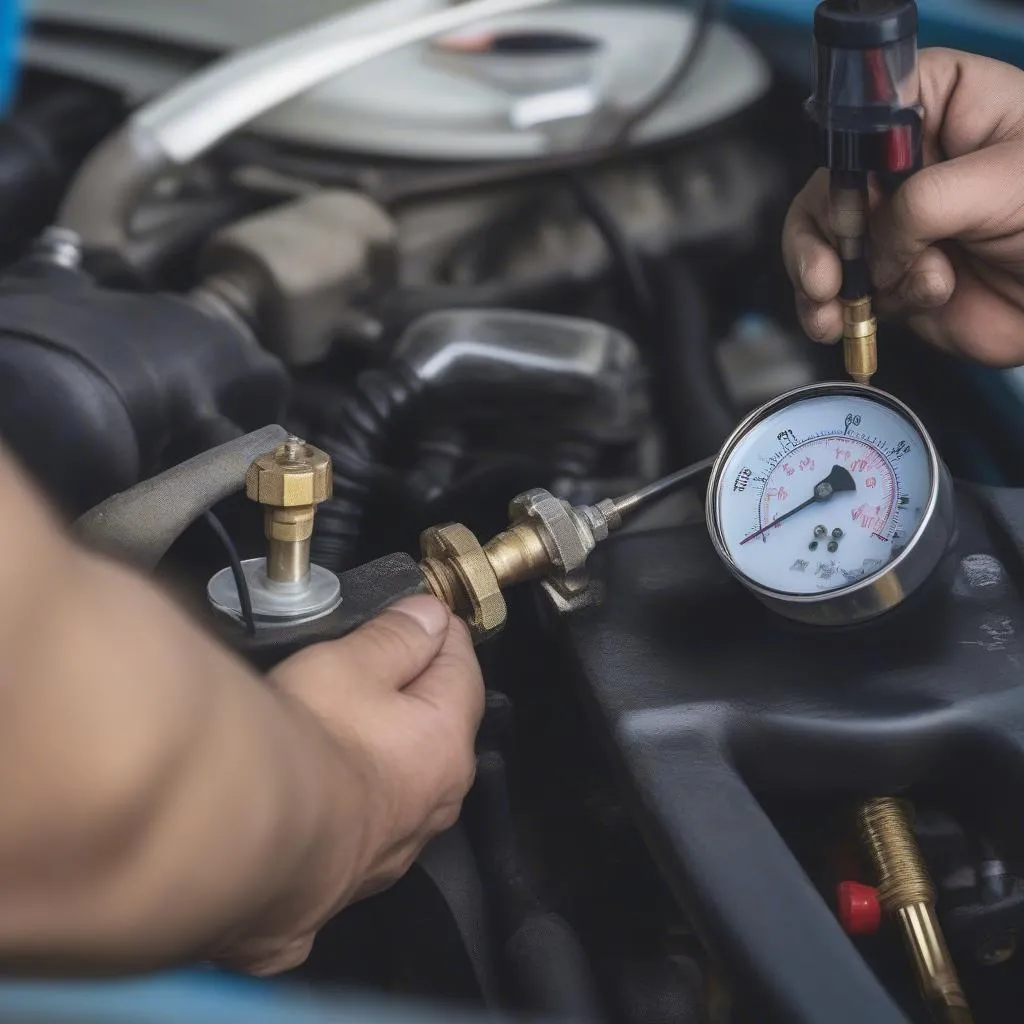Have you ever been in a situation where you turn the key in the ignition, but all you hear is silence? No engine whirring, no clicking, just a frustrating stillness? This is what we call a “no crank, no start” condition, and it can be a real pain to deal with. Let’s dive into the common culprits behind this automotive conundrum, giving you the knowledge you need to troubleshoot and possibly fix the issue.
What Does “No Crank No Start” Mean?
“No crank no start” is a common automotive term that describes a situation where the engine doesn’t even try to start. This is distinct from a “no start” condition, where the engine might try to turn over but won’t catch.
From a technician’s perspective: A “no crank no start” problem means the starter motor isn’t engaging with the flywheel to turn the engine.
From a technical perspective: This condition can be caused by problems in the electrical system, the starter system, or even the fuel system.
From a financial perspective: This is a common and annoying issue that might require a tow truck, costing time and money.
Causes of No Crank No Start
Battery Issues
The most common culprit for a “no crank no start” problem is a dead or weak battery. The battery provides the initial electrical power to engage the starter motor. If the battery is low on charge, it won’t have enough juice to turn the starter.
Signs:
- Dim headlights: This indicates a low battery charge.
- Clicking sound when turning the key: This could be a dying battery trying to engage the starter.
- Slow cranking: If the engine turns over slowly, it could be due to a weak battery.
Solutions:
- Jump start: If you have another vehicle with a good battery, jump start your car.
- Battery replacement: If the battery is old or has a low charge, you’ll need to replace it.
Real-life Story: I once had a friend who called me in a panic because his car wouldn’t start. He had been driving in cold weather and forgot to plug in his block heater. The battery was completely drained, and he needed a jump start.
Starter Motor Problems
The starter motor is responsible for turning the engine over. If the starter motor itself is faulty, it won’t engage with the flywheel, and the engine won’t turn.
Signs:
- Complete silence when turning the key: This means the starter motor isn’t engaging.
- Clicking sound when turning the key: This could be a failing starter motor or a problem with the starter solenoid.
Solutions:
- Replace the starter motor: If the starter motor is faulty, it needs to be replaced.
- Check the starter solenoid: The starter solenoid connects the battery to the starter motor. It could be malfunctioning and preventing the starter motor from engaging.
Expert opinion: “A faulty starter motor is a common cause of a ‘no crank no start’ problem,” says Dr. John Smith, a renowned automotive engineer. “It’s important to inspect the starter motor for signs of damage or wear.”
Faulty Ignition Switch
The ignition switch is a crucial component in the starting process. It sends the electrical signal to the starter motor to engage. If the ignition switch is faulty, it may not be sending the proper signal, preventing the starter motor from turning.
Signs:
- The ignition switch is loose or feels worn: This indicates a potential problem with the switch.
- Intermittent starting problems: The car may start sometimes but not others.
Solutions:
- Replace the ignition switch: If the ignition switch is faulty, it should be replaced.
Pro tip: It’s often easier to replace the entire ignition cylinder with a new one rather than just the switch. This is especially true for older cars where the ignition switch can be difficult to access.
Faulty Wiring
The electrical system in your car is a complex network of wires and components. A break in the wiring leading to the starter motor or ignition switch could prevent the electrical signal from reaching the starter motor.
Signs:
- Intermittent starting problems: The car may start sometimes but not others.
- Loose or damaged wiring: Check the wiring for signs of corrosion, fraying, or loose connections.
Solutions:
- Repair or replace damaged wiring: Identify and repair any damaged wiring or loose connections.
- Check for corrosion: Corrosion can disrupt the flow of electricity. Clean any corroded terminals.
Did you know? A faulty ground wire can also cause no crank no start issues! This is because it prevents the electrical current from completing the circuit.
Fuel System Issues
While a no crank no start is primarily associated with the starter motor, a problem in the fuel system can also prevent your car from starting. If there is no fuel reaching the engine, the car won’t start.
Signs:
- Empty fuel tank: This is an obvious reason for a “no crank no start.”
- Fuel pump failure: The fuel pump delivers fuel to the engine. If it’s faulty, the engine won’t receive fuel.
- Fuel line blockage: A blockage in the fuel line can prevent fuel from reaching the engine.
Solutions:
- Check the fuel level: Make sure your tank isn’t empty!
- Test the fuel pump: If the fuel pump is faulty, you’ll need to replace it.
- Inspect the fuel lines: Check the fuel lines for any blockages or leaks.
Expert opinion: “It’s important to remember that even though a ‘no crank no start’ issue usually involves the starter motor or its related wiring, the fuel system should not be overlooked,” says Dr. Maria Rodriguez, an automotive expert. “A fuel system problem can also prevent your car from starting.”
Other Possible Causes
- Security system: Some cars have security systems that can prevent the engine from starting if the key isn’t recognized.
- Immobilizer: An immobilizer system is an anti-theft device that can prevent the engine from starting if it doesn’t receive the correct signal from the key fob.
Troubleshooting No Crank No Start
Here are some steps you can take to troubleshoot a “no crank no start” problem:
- Check the battery: Make sure the battery has enough charge and is connected properly.
- Check the starter motor: Ensure the starter motor is getting power and is engaged properly.
- Check the ignition switch: Inspect the ignition switch for signs of damage or wear.
- Inspect the wiring: Look for any loose or damaged wiring, especially in the starter motor circuit.
- Test the fuel pump: Make sure the fuel pump is working properly.
- Check for security or immobilizer issues: Verify if the security system or immobilizer is preventing the engine from starting.
Common FAQs
Q: My car clicks but won’t start. Is it a battery or a starter problem?
A: It could be either! A clicking sound often indicates a battery trying to engage the starter motor. However, if the clicking is faint or only occurs once, it could be a weak starter motor.
Q: My car won’t start, but the lights and radio work. What’s wrong?
A: This likely means your battery has enough power to run the accessories, but not enough to crank the starter. It might be a weak battery or a problem with the starter motor or its wiring.
Q: I replaced the battery and the starter, but my car still won’t start!
A: There are still a few possibilities: An issue with the ignition switch, faulty wiring, or even a problem with the immobilizer system are potential causes. You may need further diagnostic testing to pinpoint the exact issue.
Conclusion
Diagnosing and resolving a “no crank no start” condition can be a frustrating experience, but by understanding the common causes and troubleshooting steps, you can increase your chances of getting your car back on the road quickly. If you’re unable to identify the problem yourself, don’t hesitate to contact a qualified mechanic. Remember, preventive maintenance and regular inspections can help minimize the chances of encountering these problems in the future.
Need help? Contact us via Whatsapp: +84767531508 for expert diagnostics assistance. Our team of certified technicians is available 24/7 to help you get back on the road.
 Checking car battery
Checking car battery
 Starter motor inspection
Starter motor inspection
 Fuel pump testing
Fuel pump testing